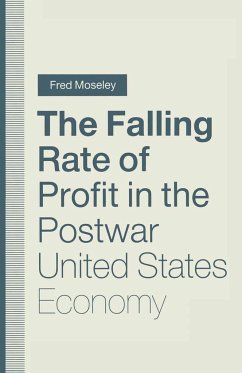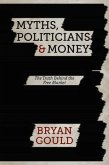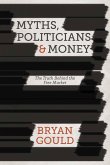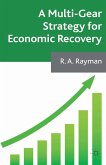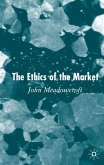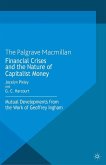Fred Moseley
The Falling Rate of Profit in the Postwar United States Economy
Fred Moseley
The Falling Rate of Profit in the Postwar United States Economy
- Broschiertes Buch
- Merkliste
- Auf die Merkliste
- Bewerten Bewerten
- Teilen
- Produkt teilen
- Produkterinnerung
- Produkterinnerung
Presents an empirical test of Marx's theory of the "falling rate of profit" by deriving estimates of the Marxian rate of profit and its determinants for the post-World War II US economy in order to determine whether the trends in these variables were in the directions predicted by Marx's theory.
Andere Kunden interessierten sich auch für
![Myths, Politicians and Money Myths, Politicians and Money]() B. GouldMyths, Politicians and Money28,99 €
B. GouldMyths, Politicians and Money28,99 €![Myths, Politicians and Money Myths, Politicians and Money]() B. GouldMyths, Politicians and Money20,99 €
B. GouldMyths, Politicians and Money20,99 €![A Multi-Gear Strategy for Economic Recovery A Multi-Gear Strategy for Economic Recovery]() A. RaymanA Multi-Gear Strategy for Economic Recovery74,99 €
A. RaymanA Multi-Gear Strategy for Economic Recovery74,99 €![The European Union Illuminated The European Union Illuminated]() Ali M. El- AgraaThe European Union Illuminated75,99 €
Ali M. El- AgraaThe European Union Illuminated75,99 €![Toxic Economic Theory, Fraudulent Accounting Standards, and the Bankruptcy of Economic Policy Toxic Economic Theory, Fraudulent Accounting Standards, and the Bankruptcy of Economic Policy]() A. RaymanToxic Economic Theory, Fraudulent Accounting Standards, and the Bankruptcy of Economic Policy37,99 €
A. RaymanToxic Economic Theory, Fraudulent Accounting Standards, and the Bankruptcy of Economic Policy37,99 €![The Ethics of the Market The Ethics of the Market]() J. MeadowcroftThe Ethics of the Market124,99 €
J. MeadowcroftThe Ethics of the Market124,99 €![Financial Crises and the Nature of Capitalist Money Financial Crises and the Nature of Capitalist Money]() Jocelyn PixleyFinancial Crises and the Nature of Capitalist Money74,99 €
Jocelyn PixleyFinancial Crises and the Nature of Capitalist Money74,99 €-
-
-
Presents an empirical test of Marx's theory of the "falling rate of profit" by deriving estimates of the Marxian rate of profit and its determinants for the post-World War II US economy in order to determine whether the trends in these variables were in the directions predicted by Marx's theory.
Produktdetails
- Produktdetails
- Verlag: Macmillan Education / Palgrave Macmillan UK / Springer Palgrave Macmillan
- Artikelnr. des Verlages: 978-1-349-12355-1
- 1st ed. 1991
- Seitenzahl: 211
- Erscheinungstermin: 1. Januar 1991
- Englisch
- Abmessung: 216mm x 140mm x 13mm
- Gewicht: 296g
- ISBN-13: 9781349123551
- ISBN-10: 1349123552
- Artikelnr.: 44459905
- Herstellerkennzeichnung
- Libri GmbH
- Europaallee 1
- 36244 Bad Hersfeld
- 06621 890
- Verlag: Macmillan Education / Palgrave Macmillan UK / Springer Palgrave Macmillan
- Artikelnr. des Verlages: 978-1-349-12355-1
- 1st ed. 1991
- Seitenzahl: 211
- Erscheinungstermin: 1. Januar 1991
- Englisch
- Abmessung: 216mm x 140mm x 13mm
- Gewicht: 296g
- ISBN-13: 9781349123551
- ISBN-10: 1349123552
- Artikelnr.: 44459905
- Herstellerkennzeichnung
- Libri GmbH
- Europaallee 1
- 36244 Bad Hersfeld
- 06621 890
Part 1 Marx's theory of the falling rate of profit: increase in the composition of capital? - definition of the composition of capital; theory of the tendency to increase; composition of capital increase faster than the rate of surplus-value? - Marx's argument; formal model with a constant real wage; formal model with an increasing real wage; Okishio's theorem - the theorem, criticisms, evaluation. Part 2 Conceptual issues in the estimation of the Marxian variables: money or labour units; non-capitalist production; non-production capital (productive labour/unproductive labour); residential housing; taxes on wages; recent criticisms of Marx's concepts of productive labour and unproductive labour. Part 3 Estimates of the Marxian variables for the postwar US economy: rate of surplus-value - composition of capital; technical composition of capital; value composition of capital; organic composition of capital; distribution of capital across industries; turnover time of capital; multiple shifts; rate of profit; comparison with Weisskopf's estimates; comparison with Wolff's estimates; estimates of the Marxian variables, 1977-87. Part 4 The decline of the conventional rate of profit: "profit squeeze" explanations; Weisskopf - "rising strength of labour"; Wolff - "slower productivity growth"; summary; Marxian explanation - Marxian theory of the conventional rate of profit; estimates of the Marxian determinants; share of profit; empirical test. Part 5 The causes of the increase of unproductive labour: detailed estimates of unproductive labour; commercial labour; financial labour; finance; insurance and real estate; supervision labour - causes of increases; effects of increase; conclusions. Part 6 Conclusion: main conclusions; further research; future trends; limits of government policies. Appendices: detailed estimates; sources and methods; assessment of bias.
Part 1 Marx's theory of the falling rate of profit: increase in the composition of capital? - definition of the composition of capital; theory of the tendency to increase; composition of capital increase faster than the rate of surplus-value? - Marx's argument; formal model with a constant real wage; formal model with an increasing real wage; Okishio's theorem - the theorem, criticisms, evaluation. Part 2 Conceptual issues in the estimation of the Marxian variables: money or labour units; non-capitalist production; non-production capital (productive labour/unproductive labour); residential housing; taxes on wages; recent criticisms of Marx's concepts of productive labour and unproductive labour. Part 3 Estimates of the Marxian variables for the postwar US economy: rate of surplus-value - composition of capital; technical composition of capital; value composition of capital; organic composition of capital; distribution of capital across industries; turnover time of capital; multiple shifts; rate of profit; comparison with Weisskopf's estimates; comparison with Wolff's estimates; estimates of the Marxian variables, 1977-87. Part 4 The decline of the conventional rate of profit: "profit squeeze" explanations; Weisskopf - "rising strength of labour"; Wolff - "slower productivity growth"; summary; Marxian explanation - Marxian theory of the conventional rate of profit; estimates of the Marxian determinants; share of profit; empirical test. Part 5 The causes of the increase of unproductive labour: detailed estimates of unproductive labour; commercial labour; financial labour; finance; insurance and real estate; supervision labour - causes of increases; effects of increase; conclusions. Part 6 Conclusion: main conclusions; further research; future trends; limits of government policies. Appendices: detailed estimates; sources and methods; assessment of bias.

